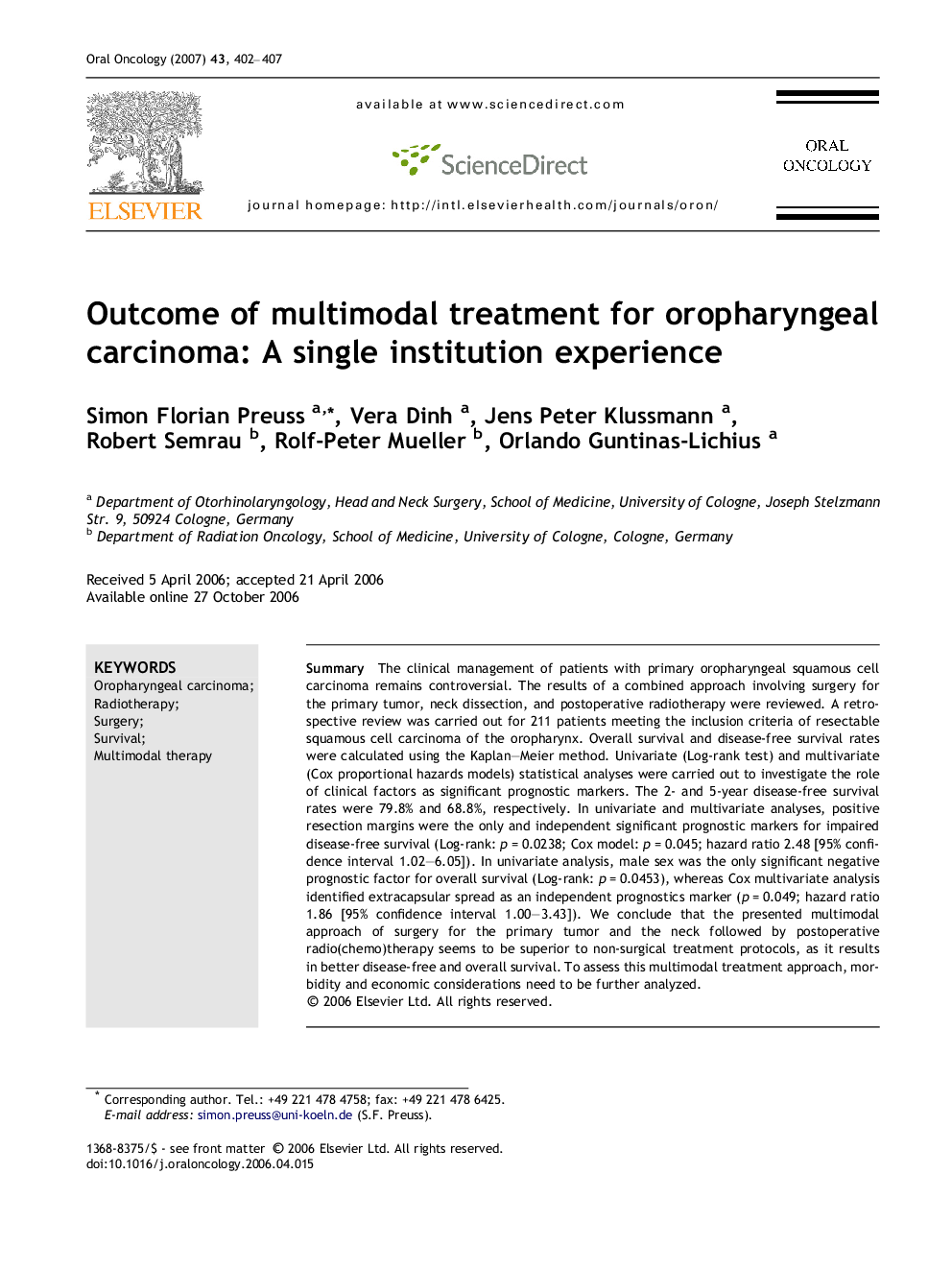| Article ID | Journal | Published Year | Pages | File Type |
|---|---|---|---|---|
| 3165854 | Oral Oncology | 2007 | 6 Pages |
SummaryThe clinical management of patients with primary oropharyngeal squamous cell carcinoma remains controversial. The results of a combined approach involving surgery for the primary tumor, neck dissection, and postoperative radiotherapy were reviewed. A retrospective review was carried out for 211 patients meeting the inclusion criteria of resectable squamous cell carcinoma of the oropharynx. Overall survival and disease-free survival rates were calculated using the Kaplan–Meier method. Univariate (Log-rank test) and multivariate (Cox proportional hazards models) statistical analyses were carried out to investigate the role of clinical factors as significant prognostic markers. The 2- and 5-year disease-free survival rates were 79.8% and 68.8%, respectively. In univariate and multivariate analyses, positive resection margins were the only and independent significant prognostic markers for impaired disease-free survival (Log-rank: p = 0.0238; Cox model: p = 0.045; hazard ratio 2.48 [95% confidence interval 1.02–6.05]). In univariate analysis, male sex was the only significant negative prognostic factor for overall survival (Log-rank: p = 0.0453), whereas Cox multivariate analysis identified extracapsular spread as an independent prognostics marker (p = 0.049; hazard ratio 1.86 [95% confidence interval 1.00–3.43]). We conclude that the presented multimodal approach of surgery for the primary tumor and the neck followed by postoperative radio(chemo)therapy seems to be superior to non-surgical treatment protocols, as it results in better disease-free and overall survival. To assess this multimodal treatment approach, morbidity and economic considerations need to be further analyzed.
